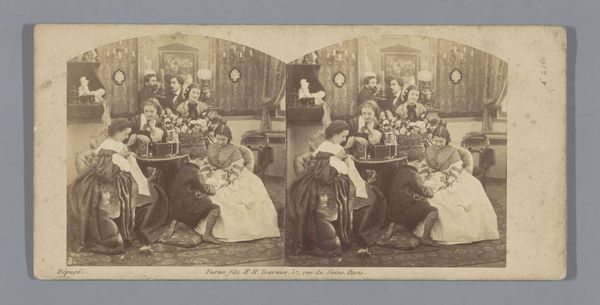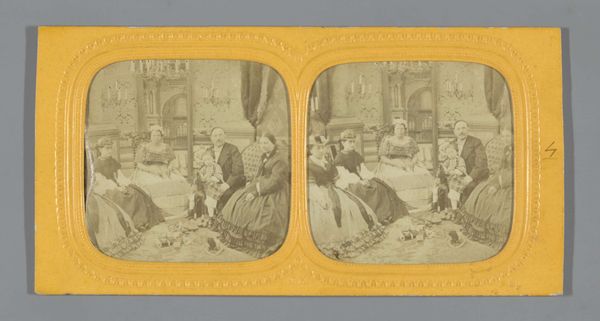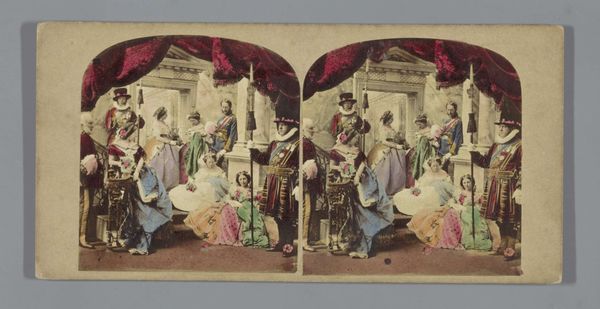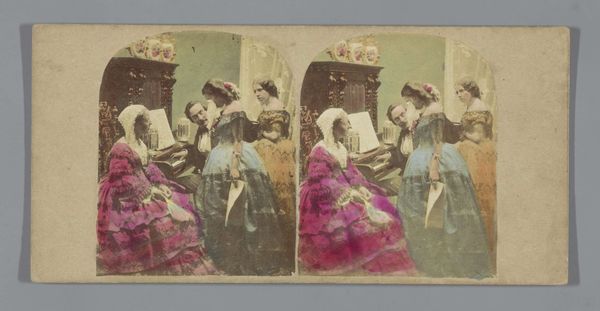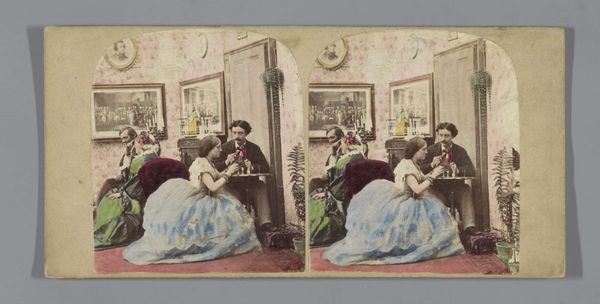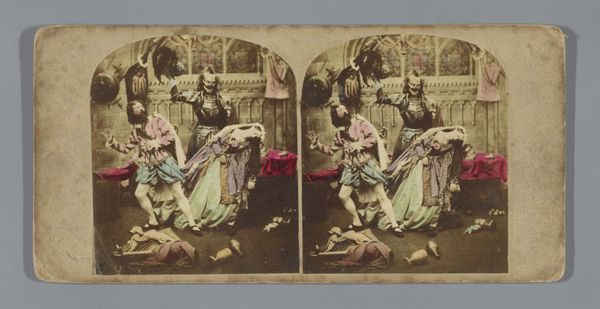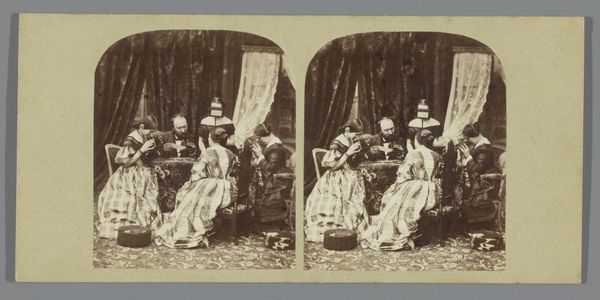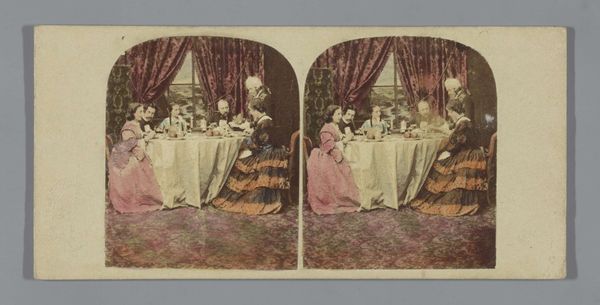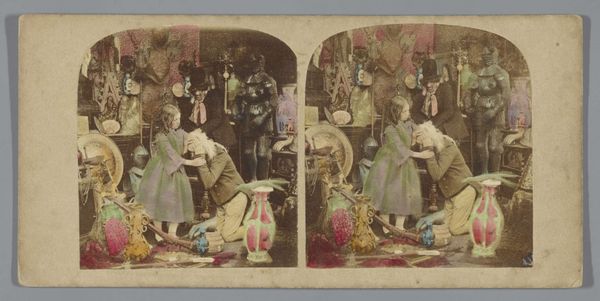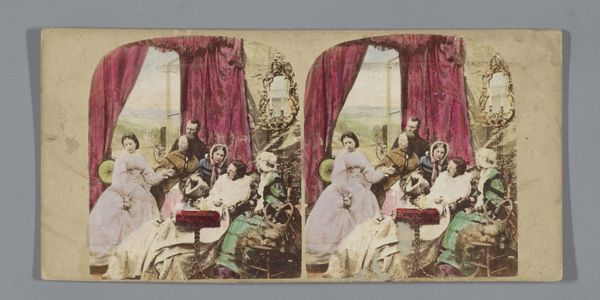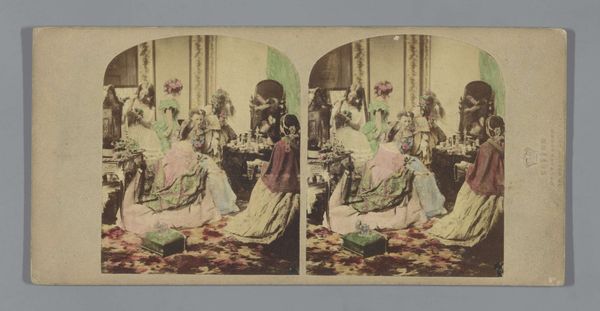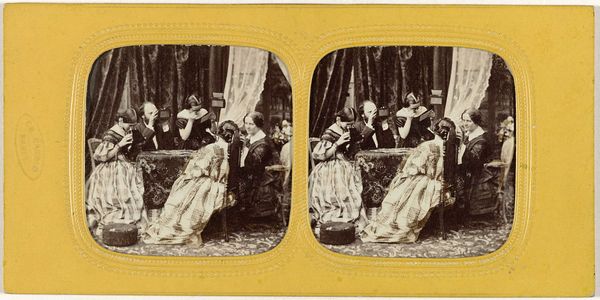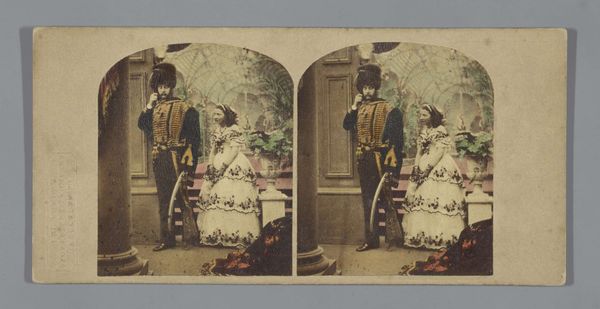
Dimensions: height 85 mm, width 175 mm
Copyright: Rijks Museum: Open Domain
Curator: We are looking at "Ball," a genre painting likely captured through the innovative medium of photography sometime between 1856 and 1861 by James Elliott. The composition displays a bustling ballroom scene. Editor: Immediately striking is the overwhelming sense of opulent formality; the figures are adorned in finery, caught mid-conversation amidst lavish decorations. Curator: Indeed. Elliott masterfully orchestrates a play of light and shadow. Notice the velvety darkness of the curtains offset by the crystalline chandeliers, creating depth and textural contrasts across the frame. What purpose might these stylistic choices serve? Editor: One might view it as more than mere documentation; it is, rather, an intimate study of 19th-century societal structures, specifically exploring the performance of gender roles. Look at how the women are passively posed and costumed, seemingly ornaments themselves amidst a scene dominated by men's overt displays of power and camaraderie. The romantic style does tend to elevate or idealize elite societal events. Curator: I observe something else. See how Elliott positions most of the figures at slightly varying angles from each other? The eye dances across the ensemble cast, experiencing multiple spatial arrangements almost simultaneously, contributing to its sense of dimensionality. Editor: But doesn't this also capture a particular moment when restrictive dress codes symbolized female submissiveness? The tightly laced corsets, voluminous skirts; all enforce constraints both physically and socially upon those who wore them within the confined spaces and exclusive events that only emphasized the imbalance of power. Curator: I agree that the material choices reinforce a deliberate staging, further emphasizing Elliott’s intent. The interplay of compositional structure and materiality reveals a world concerned with class, social appearance, and, perhaps, anxieties about both, reflected and reinforced through each posed tableau. Editor: Certainly, Elliott’s composition makes us consider the socio-economic realities of its time—not as a straightforward snapshot, but rather one that underscores inequalities encoded in cultural rituals of leisure, offering potent reflections even now.
Comments
No comments
Be the first to comment and join the conversation on the ultimate creative platform.
